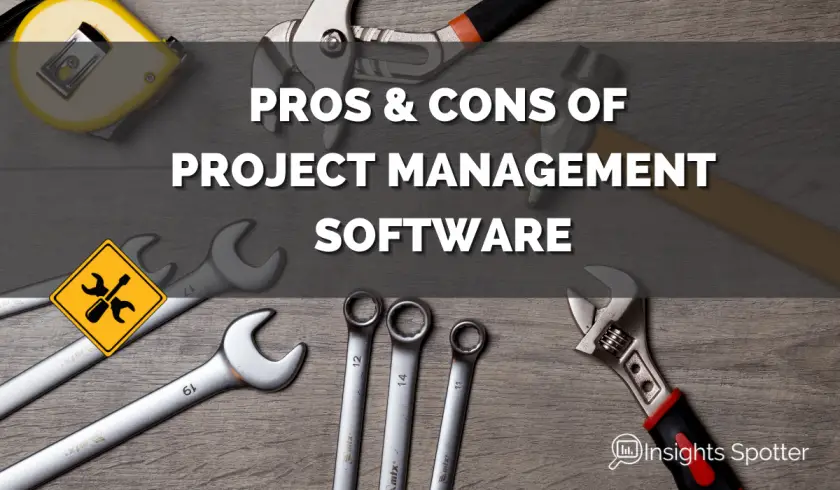Pros and Cons of Project Management Software
We spend a lot of time optimising products, departments, and businesses in the project world. But, we also overlook opportunities to streamline project management processes, which often include repetitive tasks or require a lot of time to align with resources. To address that, we can explore the advantages and disadvantages of Project Management tools and how they make sense when running a smooth project.
Project Management Software and Tools speed up tasks like scheduling or resource allocation; thus, they save time and resources for projects to apply creative efforts to solve problems or find new solutions. Still, the incorrect or complex tools for the task can do worse than Excel or pen and paper.
Keep on reading if you want to understand what tools make sense in several project situations and what attributes to consider when choosing the tool. Plus, we will explore the pros and cons of getting a more complex software tool vs sticking with excel, MS Teams and emails.
Sometimes simple solutions are the best versus half-integrated options like a Planner in MS Teams. But where do we stand with complete platforms like ClickUp or Monday.com?
What Are Project Management Tools or Software?
Project Management is not very easy. There are countless resources, dependencies or timelines to manage. Working without dedicated tools for some of these processes is just unnecessarily complex; why would you put yourself in that position?
When we talk about tools, we mean really everything that helps you manage your projects, from simple tasks like making notes in Word or simple Excel forms and sticky notes on the board to more refined project software platforms like ClickUp, Confluence or JIRA.
Some of these tools specialise in one area or aim to cover several:
- Scheduling or Planning & Timelines: One of the most detailed and time-consuming project management steps. Softwares like ClickUp or JIRA can help you arrange tasks on Kanban boards or switch to Gantt Charts (Project Plan) view.
- Communication and Stakeholder Management: Project managers’ most crucial ongoing task is managing expectations. If you do not receive support from your senior stakeholders or you cannot discuss it with your team, your project will not happen. Thus, you need tools to work with the team. Tools like MS Teams, Skype, and email are those tools.
- Project Repository (Document Storage & Archive): Places like Google Drive, Confluence, or SharePoint allow you to save project documents, like lessons learned.
- Budget & time spent: Help calculate your budget needs based on resources needed or help to track time spent on various tasks.
- Actions & Task or Work Management, progress tracking: Software here helps manage daily tasks, helps to organise workflows and activities, and collaborates on various deliverables.
- Risks & Issues Management: Tools that allow you to track your risks and issues, such as Excel, JIRA, Confluence, SharePoint and many more.
- Portfolio Management tools: One sub-set of Project management tools dive into helping manage groups of the project (Portfolio management), which are used at the organisation level.
No project can get away from using some sort of tools. And software-based solutions offerings have exploded in the last few decades. You can check a great list of some popular offerings in Capterra here.
Cloud-based options are even more critical now that people have started to work more remotely and need to collaborate at a distance. Thus, selecting the right tools could considerably impact the project’s success.
Of course, project management tools have been around for some time, and users have been shaping them through feedback and comparison. Over time, many missing pieces found their way into new platforms. We are not talking about to-do lists, notes, chat apps or calendars. No, no, no…
Platforms nowadays can offer to structure tasks in boards, and Gantt Charts, notify about new activities and collaborate in one place. We are actually very close to having platforms, which on their own, can offer excellent complete project management solutions or seamlessly link up with other third-party providers, if necessary, like Google drive.
Solutions these days help a project manager to have a rounded set of tools to manage all project constraints:
- Scope
- Time
- Cost or Budget
- Quality
- Resources
- Risks
If you like to read more about the project constraints, check out my previous post: WHAT ARE PROJECT CONSTRAINTS? SIX YOU NEED TO KNOW.
I think you are here probably because you want to understand if it is time to upgrade your game in Project Management solutions. Still, it’s essential to understand your options before choosing the right tool for you.
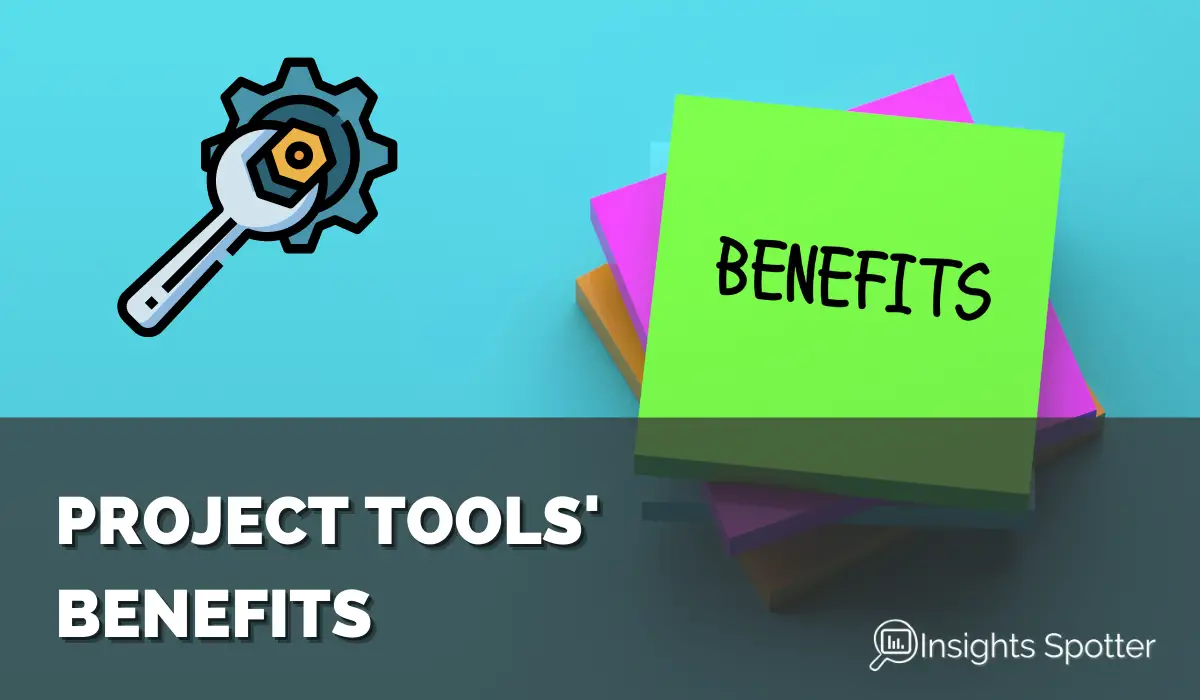
What Are a Few Benefits of Project Management Tools?
1. Enhanced Activities Oversight
Project management tools like ClickUp allow you to create and assign tasks and track activities. Plus, you can automatically create various helpful status updates to see where you are with all deliveries, even across departments.
2. Decrease Administrative Burden
As task management is automated, there are fewer needs to spend countless hours in updates meetings or trying to find the latest in your mailbox. Usually, you have significant task-tracking capabilities with visible status and clear archiving capabilities. Project updates can easily take one day per week. If you agree with management and automate these reports with available tools, you can save the day for more productive work.
3. Enhanced Budget Management
You can easily track your estimated budget vs actual expenses. The tools will show you where you are spending extra, and you can consider if the specific area can be adjusted to align more with the plan.
If you like to learn what to do if you are actually running over budget, check out my post: WHAT TO DO WHEN A PROJECT IS OVER BUDGET? FIX IT.
4. Great Collaboration
Projects almost always require collaboration between cross-functional teams; hence, these systems sit in the middle of the project and allow cooperation between these usually disjoint areas in the business. They can share feedback and updates and respond to required changes.
Today, when many people work from home, collaboration tools are even essential for those in the same teams.
Cloud-based solutions with multiple features make it easy to work together due to innate sync capabilities, enabling working on the same work items.
5. AI Planning Capabilities
Some new players in the market utilise machine learning capabilities and AI to do project planning for you. Managing a project plan is one of the most time-consuming tasks, and any tool that can reduce administrative burden can save you time for other tasks like addressing issues.
This is a relatively new but growing field in project management tools. One contender to be the best in this space is Forecast. I recommend trying it out, especially if you spend too much time on those project plans.
6. Resource Management
Finally, we should not forget these tools allow better resource management. Microsoft Project has been trying to achieve this for some time now. But tools these days are at a different level. They make it easy to manage workloads, allocate resources to the right tasks, and use resources in the most optimal way.
In particular, these tools are life savers if you have a lot of parallel projects or run a programme. By monitoring resource allocation and availability, you can identify potential bottlenecks and make the necessary changes to ensure that projects are completed on time and under budget.
Furthermore, project management software may also help you track each member’s progress and ensure they prioritise the right tasks. This increases employee satisfaction and engagement while also enhancing productivity and indented project direction.
If you like to learn more about who can be in the project team, check out my post on the subject: WHAT IS A PROJECT TEAM? PEOPLE, YOU NEED TO DELIVER EXCELLENT RESULTS. And if you would like to learn more about AI in Project Management, I have written this post as well: UNLOCKING THE BENEFITS OF AI-POWERED PROJECT MANAGEMENT.

What Can you Expect from Project Management Tools?
All of the below features will save you time and effort, which you can actually use to address various problems in the project and not just administer update reports.
When selecting the tool, you need to consider your business case. Still, I would argue that your future tools should have most of these features, allowing the project team to be more flexible and enabling future-proof project management styles.
1. Smooth Collaboration
Chats, tagging other members in conversation, and re-assigning tasks are commonplace in most tools nowadays. Plus, you can manage communication internally and with external clients, like in MS Teams.
2. Easily Sharing Files
You can usually upload various files like requirement documents in Word, images, PDF or spreadsheets in Excel, and the project team can jointly work on them as part of collaboration efforts.
3. Standardised Management Process
These tools allow the creation of project management workflows for repeatable tasks. Thus, new joiners or even existing staff know what they need to do next using predefined steps. Ultimately, the team will not waste time just trying to understand who needs to sign or what forms to fill out.
4. Task & Activities assignment, management and tracking
Systems should allow easy task tracking for both the team members and the Project Manager, who need to track progress. These features will enable you to define tasks, assign owners due dates, provide descriptions or priority and other items to help manage them.
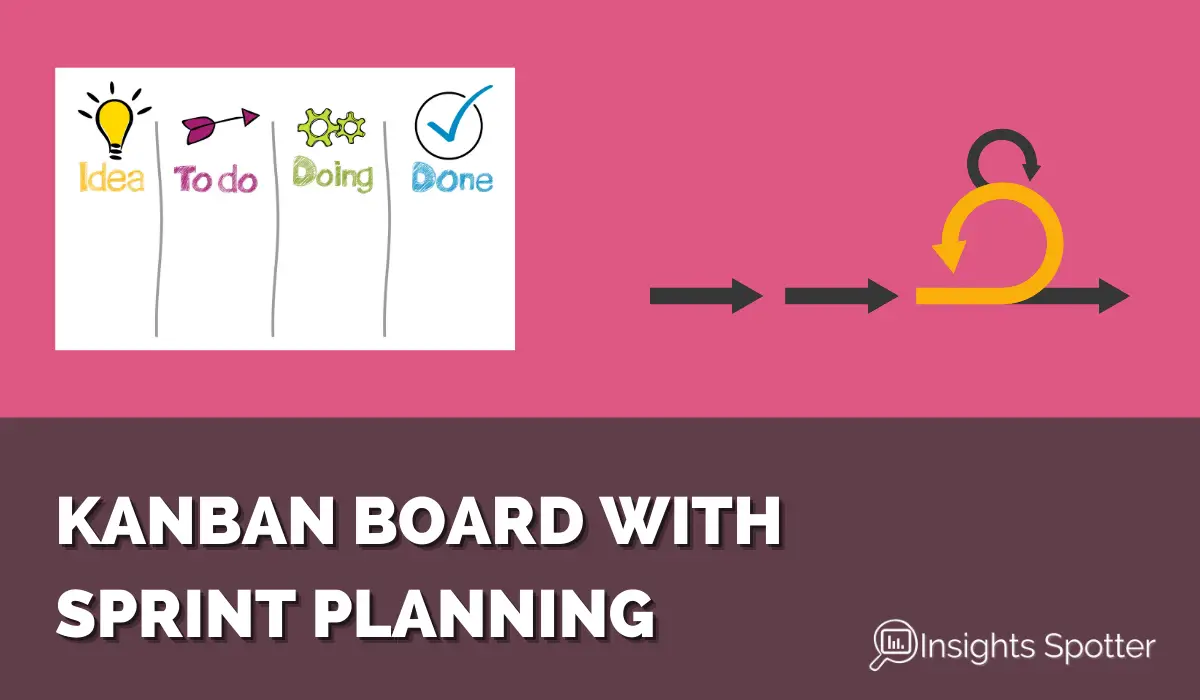
5. Kanban board with Sprint Planning Capabilities
One way to manage activities and tasks is through Kanban boards or sprint planning. These are actually trendy features in Project Management tools as they allow Agile frameworks like Kanban or Scrum. These tools will enable you to place your activities and tasks within the Kanban board with columns like Backlog, In Progress, or Done. Alternatively, you could manage your tasks through sprints (time intervals for a specific activity). In both ways, the team will have centralised visible space for all tasks, whether in progress or completed.
6. Project planning
Every project should have a version of this process, as you need to understand what the project will be about and when it will happen. Software tools should offer tools and options to plan out your tasks, and create timelines, work breakdown structures (WBS) and Gantt Charts. Finally, you need to know what resources you need and where to allocate them to the project.
7. Gantt Charts Features
A Gantt chart is a graphical representation of the project timeline and plan. Usually, it is displayed using horizontal bars based on work items in the plan and planned start and end dates. You need these in a project where Waterfall or a similar approach is used, or management needs this visual presentation.
8. Resources Management
It is hard to keep track of all your resources, particularly with a larger project. More so when we need to know the individual capacity or required allocation within the timeline. Project management tools can easily show how many tasks each own. Plus, you can see what resources you will need in the future and start working to acquire them or upskill existing ones.
9. Time Tracking
Time tracking is closely linked with resource management, and these tools often have ways to log time spent on various tasks. It helps manage existing resources and see where they might be overworked or where you can distribute a bit more work.
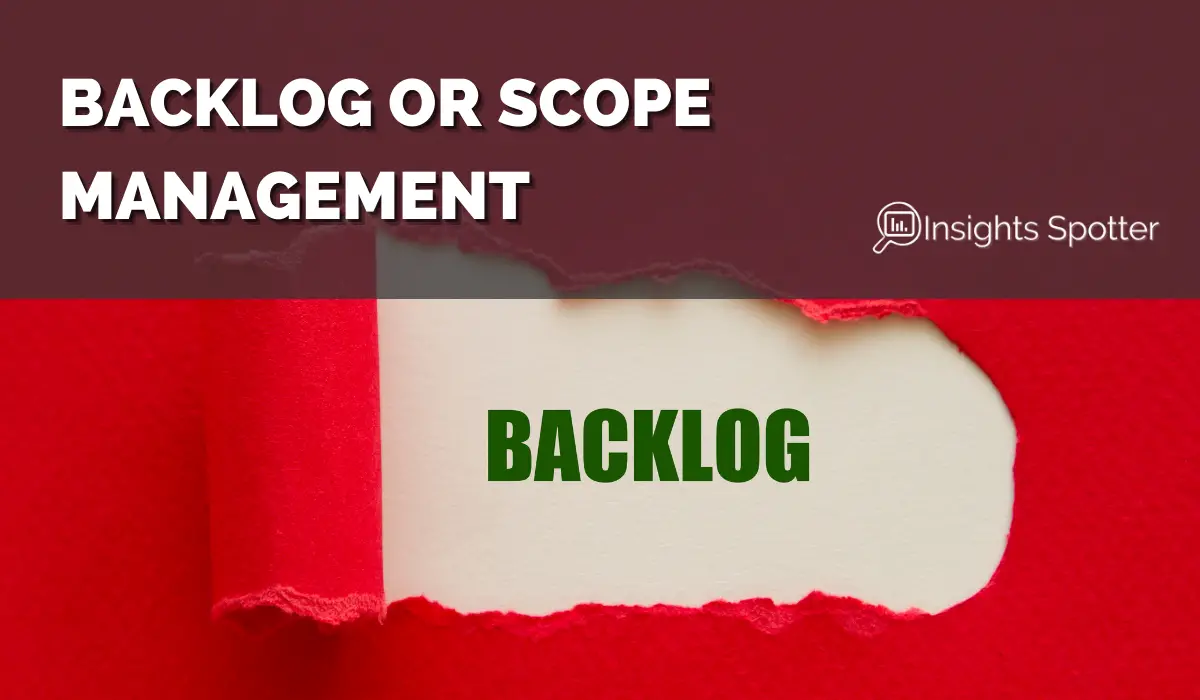
10. Backlog or Scope Management
These tools should also record work items or areas you need to work on in the future. Most importantly, they should allow for so-called backlog grooming, prioritising and refining backlog items.
11. Quality Management
Each project should have ways to manage deliverables quality. Therefore, there should be ways to track testing or approval processes for delivered items.
12. Portfolio Management
When you are a bit more senior project manager or need to see the overall organisation’s picture, you will need tools to aggregate views from multiple projects with different teams and timelines into one dashboard. Such tools will help make strategic decisions or indicate how to optimise resource allocation.
13. Reporting and analytics capabilities
After defining your tasks, you should have access to multiple reports, either already available or having options to create custom ones. These reports can inform you about your project KPIs and how well you meet business objectives.
14. Risk Management Features
Any project’s success depends on sound risk management; hence tools for project management should incorporate features that make it simpler to detect, analyze, and mitigate risks. You may use these tools to create a risk registry, assign owners to different risks, and create mitigation and backup strategies. Moreover, risk tracking and reporting may inform the team about the risk status and help prevent minor issues from becoming major ones.
15. Project management app (Optional)
Sometimes, you need to manage your projects on the go. Some tools create desktop or web applications and apps that can sync. Therefore, you can update your statuses, manage communications or participate in the discussion from your palm.
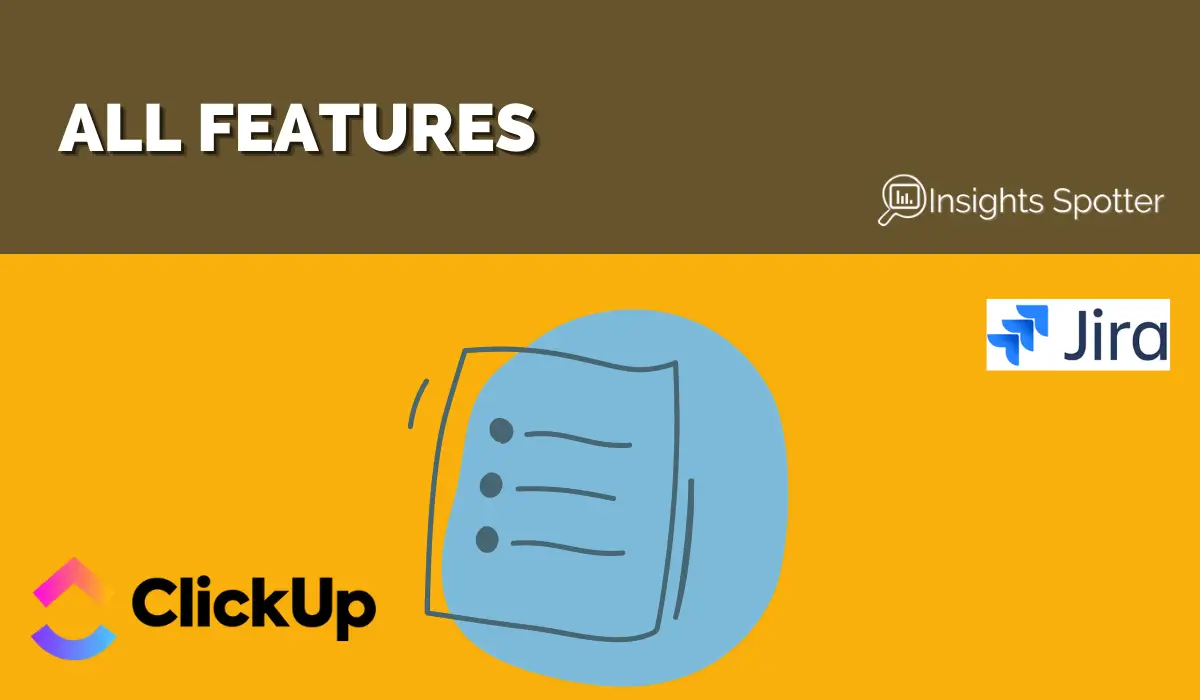
Is There Any tool that has all Project Management Features?
I have been using a lot of JIRA and Confluence in my career. Combined with some add-ons, they have all these features above. Still, JIRA and Confluence are not cheap. They could do a better job with simplification as you need to spend a lot of time fiddling to get the views or arrangement you want.
However, I recently found the tool ClickUp, which I found very promising. It seems to be an excellent medium that fits most project management styles with Gantt Chart and Kanban, which you can apply for the same project.
I have been in countless situations where the company says they want to run an Agile project, but the management board wants a detailed plan for the whole year to approve budgets. Then you need to convert your Kanban tasks into some PowerPoint bar chart or similar. ClickUp looks like it makes it super easy. Plus, it integrates with MS Teams, which is often used for communication.
Plus, you can try it out for free or even use it for your personal project indefinitely and decide for yourself.
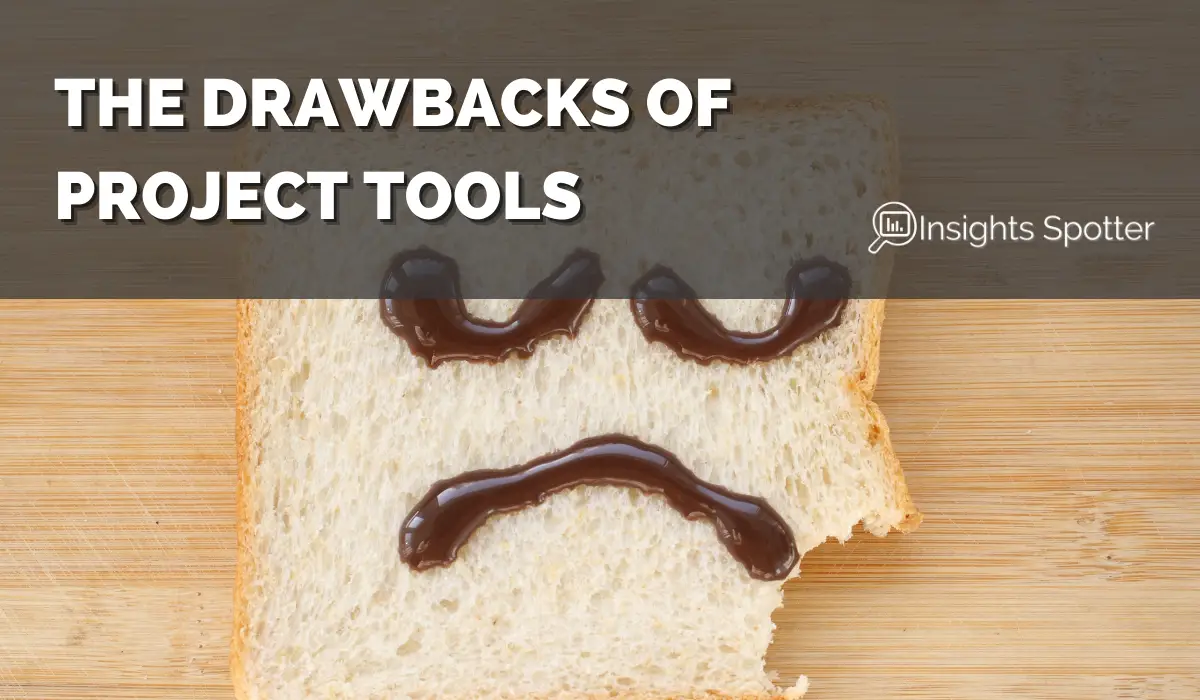
The Drawbacks of Project Management Tools and Mistakes to Avoid
Unfortunately, there is no perfect management tool in the market, especially for everyone. There are those that I think are getting close, like ClickUp, but being perfect is one of those goals you will never really achieve.
Thus, let’s look into what to watch out for when selecting your project management tool.
1. Only One Project Management Area is Available
Some project management tools are often created by recent start-ups, who do not have the resources to cover all necessary topics in the project management space.
Or they feel that only one particular area in the space needs to be improved. So start-ups might have a good say in communication management but less in planning. Therefore, you must spend extra on additional tools to have everything you need for your project.
2. The Issue with the Need for Multiple Tools
If your tool does not cover essential areas for your project, that means you will need to find additional tools to cover gaps. You end up in this enterprise software management game, where you spend a lot of time just trying to link up and track everything, then spend time updating your software, solving bugs with multiple different help desks etc. Needless to say, maintaining numerous tools could be time-consuming and result in errors or misaligned information.
3. Poor Linking Capabilities with Other Tools
Because there are no perfect tools, you will eventually need to link up your project management tool with others in the business, like Google Drive, SharePoint, or similar. That is ok. Sometimes other companies have just more resources to perfect some features. The name of the game is not to have everything in one tool but limit the number of tools you need to maintain.
Therefore, when selecting the tool, keep an eye on abilities to link with other tools in the business like databases, communication links and syncing capabilities. You will most definitely need them for your project.

4. Paying for What You Do Not Need or High Ownership Cost
One other problem worth considering is your future needs. You must understand how big your team will get in your project or your company. There are countless plans available for each tool, and you just need to consider a combination of tools that still make sense and deliver the overall features you need. Also, some enterprise pricing options become a procurement game, and bespoke pricing is in agreement.
The problem is that you might overpay if you do not look around for various options available. The countless features might cloud your judgment, and you think you get a lot of value, but sometimes you do not need them.
There are so many options with very competitive pricing models these days, which often allow you to select just the features you will really use today. They are usually priced per user, per month cases and typically have around three paid tiers for additional features and then an enterprise agreement option. From what I have seen, prices look something like this:
- Trial / Free Version
- $5-$15
- $15-$40
- $40+
- Enterprise Agreements
5. Required Features Selection
You do not know what your organisation will need in the future. Thus, you should select a tool with some more tricks in the bag for later and keep your options open. When the need arises, you can quickly pay a bit more to get additional features from vendors. Otherwise, you might need to go to the market and look at alternative vendors. So, you should be aware of all vendor features and not just what you are paying now for.
You should really dive into the specifics of each feature the tool offers. For example, some tools are better suited for the construction industry, and some might be better for IT. Vendors could provide specific templates and tasks prevalent to the industry, say issues tracking like IT system bugs.
Generally, getting as many features as possible in one tool will be cheaper than combining overall solutions from multiple providers. The vendor will offer discounts; maintenance costs will be reduced. Plus, you will need to address topics like time cost to learn interphases, link multiple tools together and jump around using all those tools to complete your tasks. Still, it would be best to balance it with specific industry needs.
6. Understanding How Complex is UI
Some older management tool options are usually reliable but less user-friendly and have steeper learning curves. Thus, if you have a large team, the training could add up and getting the smooth usage of the tool will take time.
My experience suggests that if the tool is too complex, people avoid trying to understand it, and you spend a lot of time booking meetings in their busy schedules trying to teach them. So, try to make your life easy and find a pretty intuitive tool.
Several vendors offer free options or trial periods to test their tools; use the opportunity to try them yourself. If you do not understand the tool after 14 days (the usual trial period), it is a good indication that you need to look for a different one. ClickUp offers the Freemium option, where you can also test multiple features on your own indefinitely.
Unfortunately, you cannot avoid training at all. Sometimes organisations will start moving from spreadsheets to using these cloud-based tools, and the visual experience is different. You need to account for some time to teach people to navigate these new tools. So, when considering adding a project management tool, account for the additional time you need to become productive.

7. Managing and Planning and Ignoring Execution
Project management tools have many fancy features that help you plan and visualise the work. However, making visually appealing plans is not the end, as somebody needs to complete those tasks to achieve project success.
People often only add tasks to these project management tools but do not maintain them by updating comments, statuses, or new planning arrangements. The usual complaint is that they are busy and updating tasks is a waste of time, but it could not be further from the truth.
Tools are not everything. You cannot think that your project is done if you have some magical tool. There is a lot about managing people, arranging resources, etc. Tools only allow you to be more efficient and organise work, but they do not replace it.
You see, long term, you need to know what each resource is doing and where the project is slipping so you, as a project manager, can steer your project ship and address creeping issues before they become an issue and you miss your deadline.
Therefore, you cannot just rely on the software to manage your project for yours. You need to book meetings to discuss tasks and problems. You need to review progress in the tool and with the team. Thus, balancing using the tool and team communication is essential.
8. Need to Manage Access
These days, project management tools have pretty good access management options. The issue is not the tool but you, as a project manager, who must ensure that people have the proper permissions when they come into the project or leave.
Also, these tools are usually integrated into the company’s infrastructure via a cloud solution, which means that all colleagues from the company often have access to the tool and sensitive information inside. Hence, you need to monitor some of these issues and ensure the proper permissions are set at the team or organisation level.
9. Cloud-Based vs On-Premises Options
We have already discussed the benefits of cloud-based solutions. In particular, when it comes to collaborating and sharing work at a distance. However, there are some security concerns with such tools. Companies that deal with sensitive data, like the telecommunication industry (people names, contacts etc.) might not have the luxury to use such options.
Therefore, if you are looking for new software, you might need to go for the one that can be installed on-prem for security reasons. Usually, project management solutions do not require heavy computing power; thus, they will not require powerful and expensive servers. However, it will add to the overall maintenance cost for the organisation and may limit some capabilities of the tool.
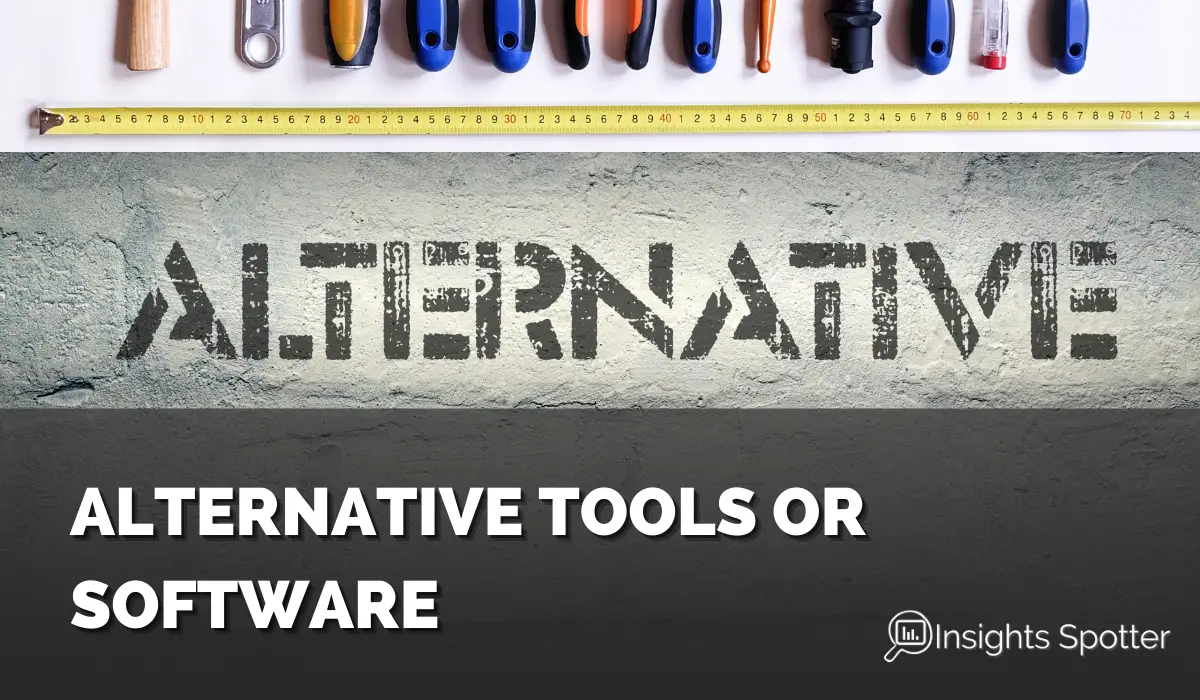
Alternative to New Project Management Tools or Software
Before you open your wallet and splash your money on new software solutions, you should know about some alternatives you probably already have in your organisation.
1. Microsoft Word
Many templates are available for various business processes in Microsoft Word. It syncs nicely with SharePoint, thus allowing excellent collaboration between teams on numerous documents like requirements, scope statements or minutes. Usually, it comes in Office 365 form. I used Word very often but noticed that I did less so these days.
2. Microsoft Excel
Excel is a versatile tool with many templates for Gantt Charts (project plans), forms, or just calculations. You can use it for requirements gathering, actions logs, risks & issues. Again you can communicate with your teammates via OneDrive or SharePoint. It is perfect for quick and dirty solutions and super easy to use. Still, if you have a more extensive project, it might be time to upgrade.
I like using Excel for the initial discussion about the project plan or gathering project requirements. I found both Excel and Work work well when agreeing on initial scope, work packages or phases. But when it comes to tracking activities, and tasks, or constantly updating plans during the project, better tools are available.
3. Microsoft Teams
When you dig a bit into MS Teams, you will find a surprising variety of various add-ons; some of them cost extra. One of those add-ons that come for free is Planner. It is essentially a Kanban board type of tool, which works great with smaller teams or just track some action points. You can also link with other project management software like ClickUp.
MS Teams is a communication and collaboration tool that links well with other MS products. So if you combine it with Word and Excel, you could run the whole project in theory. However, it just doesn’t feel like a tool designed specifically for project management, and you would need to find some workarounds if you do not want to pay extra, like building Gantt Charts (project plan)
4. Microsoft PowerPoint
The tool is designed for presentation, and trust me, you do many of them. You usually end up copying views from Word or Excel, like a project plan or some budget table, into PowerPoint. Even though you will not avoid having a PowerPoint presentation as senior management just love them, it is not an automated tool. You spend much time fiddling with views, objects, and setting to get your desired presentation.
Again, some positive aspect is already available templates for timelines or smart objects showing simple flows. For a high-level presentation, it is fine, but you usually need more detailed views and paid tools from Microsoft like Visio or similar.
To be fair, you will need PowerPoint until your management is happy with just looking into the new platform’s dashboards and does not need separate presentations. There is a very long learning curve to teach everyone new tools, and management usually goes for old-fashioned slides.

5. Simple Whiteboard or Sticky Notes
Sometimes, you just need a whiteboard and some sticky notes in the meeting room. There is something about physical objects that help with collaboration and really considering ideas. Some would say you can only use those if you apply some Lean or Kanban frameworks, but I have seen significant progress using these methods in the traditional project planning phases.
I have also seen people using Windows Paint as a whiteboard in virtual meetings. It is not the best tool available, but it does a job when you present some simple idea. Also, you can use PowerPoint or Excel and insert objects to communicate concepts.
6. Microsoft SharePoint
I have recently discovered additional benefits of SharePoint beyond just sharing files. Many people have been using it, but I just did not see the benefit for my project. Recently, I have started using the SharePoint feature “Lists”, which essentially allows you to create Excel forms online. Thus, you can use it for Action logs, Risk & Issues or similar. The great thing is that you can easily share single items from the list and collaborate as if you just created your own app. It is super customisable (as an excel list) and works quite well.
7. Microsoft Power Apps
Microsoft has these power apps. The point of them is to automate some repetitive activities. I think for some more advanced functions you have to pay. But one feature I really like, which is already available as default in SharePoint. When you create your actions list with a target date, you can set up PowerApp to send you a notification straight to your email box, say 2 days before some target date.
8. Microsoft PowerBI
If your project has data points like time spent or effort levels stored somewhere in SharePoint, you can utilise PowerBI to track the progress of your project and KPIs. This tool has a learning curve, but many features come in for free, and you can make beautiful dashboards for your project.
You probably noticed that most of the tools are from Microsoft. The reason is that most companies have these tools already as a default. Therefore, why spend extra if for some smaller projects, these can do the trick? Still, I have noticed that these will not be as smooth as having everything in one place, like in ClickUp. There will always be some workarounds you will need to apply.

Top Project Management Tools Per Project Management Area?
| Field of Expertise | Tools |
|---|---|
| Best Overall Tool: | 1. ClickUp |
| Scheduling & Timelines: | 1. ClickUp. 2. GanttPro. 3. TeamGantt, 4. MS Project |
| Communication Management: | 1. MS Teams, 2. Hive, 3. ClickUp |
| Project Repository: | 1. Google Drive, 2. OneDrive, 3. SharePoint 4. Confluence, 5. ClickUp |
| Budget & time spent: | 1. ClickUp, 2. Nutcache, 3. MS Project |
| Action, progress tracking: | 1. ClickUp, 2. mondey.com |
| Risks & Issues Management: | 1. JIRA, 2. ClickUp, 3. SharePoint, 4. MS Excel |
| Customisation: | 1. Smartsheet, 2. MS Excel |
There are many more options available, but at some point, it is not about the tool but what you do with it.
Conclusion
I hope that the post helped you better understand what you need to consider when selecting a Project Management solution. No solution fits all, but some have more integrated features.
I advise keeping it simple while concentrating on delivering the project and not just playing with the tool.
Still, the time comes to invest in these solutions; structured thought processes will help you find the best solution. If I needed to choose now, I would probably end up with ClickUp.
I have recently written a few other posts on Project Management tools, which you can find here Link
Subscribe to our newsletter!
 ABOUT ME
ABOUT ME
I am an experienced ex. Business & Data Analyst and now a Project Manager with multiple years of experience gained in several international companies.
These days, business problems require data crunching and telling stories to make the right decisions. Simply put, business stakeholders need insights into their projects and deliveries.
This is where I come in. I have learned and applied Python, Power BI, SQL and Excel to analyse and present data. Also, I gained experience in Project Management and Business Analysis. So, I can not only spot insights but execute business decisions. Moreover, I can teach you as well. Read More
Best Books








Latest Blog Posts
- Sustainable Project Management: Trends, Tools, & Strategies
- Unlocking Strategic Value: How NIST CSF 2.0 Shapes Project Choices for Better Outcomes
- Cybersecurity Project Management: Protecting Your Digital Frontier
- What are the Different Types of Planning in Project Management?
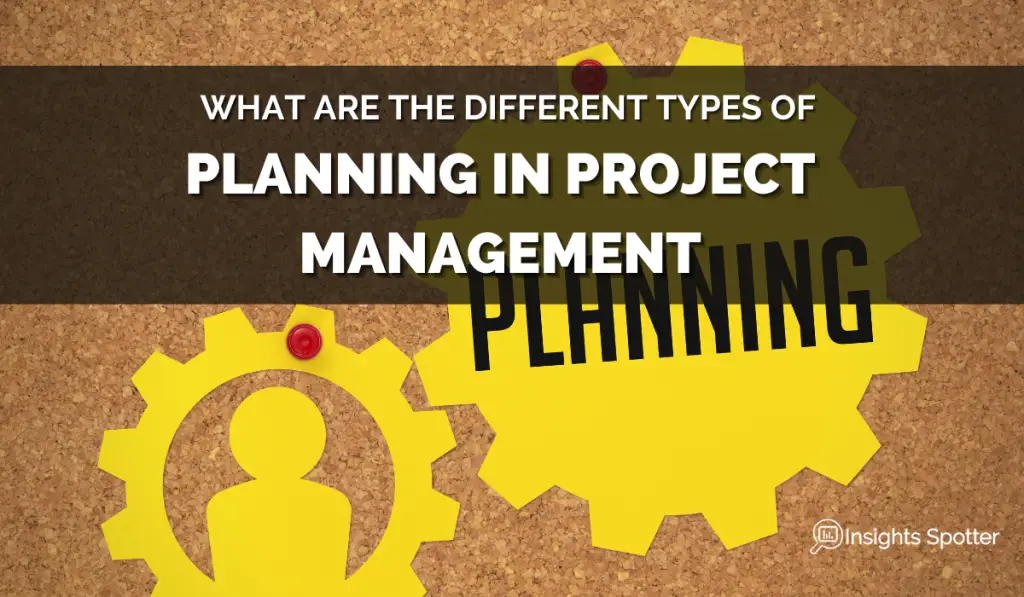
- Transforming Project Management with AI Software: Tools, Challenges, and Best Practices
- Unlocking the Benefits of AI-Powered Project Management
Need Project Manager’s Help!?
Check out the Fiverr marketplace if you do not have time to run your own projects or just need extra help. They do have multiple project professionals, including project managers. Maybe you will find just the right fit to take some burden from you. I have used Fiverr in the past. The prices are also not too bad. If you seek PM via the corporate route, it will be easily 5x the price.

